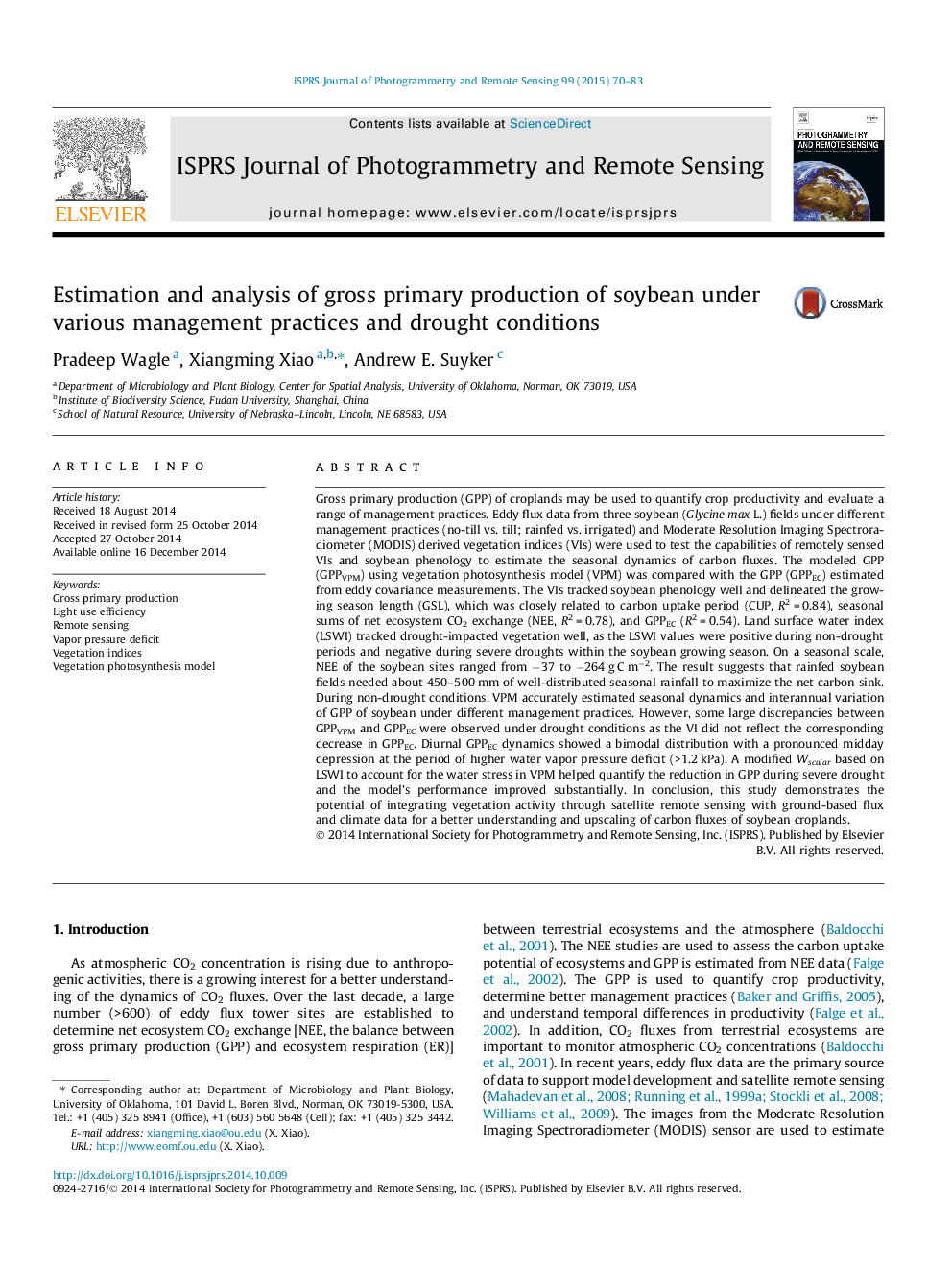| کد مقاله | کد نشریه | سال انتشار | مقاله انگلیسی | نسخه تمام متن |
|---|---|---|---|---|
| 554961 | 1451275 | 2015 | 14 صفحه PDF | دانلود رایگان |
Gross primary production (GPP) of croplands may be used to quantify crop productivity and evaluate a range of management practices. Eddy flux data from three soybean (Glycine max L.) fields under different management practices (no-till vs. till; rainfed vs. irrigated) and Moderate Resolution Imaging Spectroradiometer (MODIS) derived vegetation indices (VIs) were used to test the capabilities of remotely sensed VIs and soybean phenology to estimate the seasonal dynamics of carbon fluxes. The modeled GPP (GPPVPM) using vegetation photosynthesis model (VPM) was compared with the GPP (GPPEC) estimated from eddy covariance measurements. The VIs tracked soybean phenology well and delineated the growing season length (GSL), which was closely related to carbon uptake period (CUP, R2 = 0.84), seasonal sums of net ecosystem CO2 exchange (NEE, R2 = 0.78), and GPPEC (R2 = 0.54). Land surface water index (LSWI) tracked drought-impacted vegetation well, as the LSWI values were positive during non-drought periods and negative during severe droughts within the soybean growing season. On a seasonal scale, NEE of the soybean sites ranged from −37 to −264 g C m−2. The result suggests that rainfed soybean fields needed about 450–500 mm of well-distributed seasonal rainfall to maximize the net carbon sink. During non-drought conditions, VPM accurately estimated seasonal dynamics and interannual variation of GPP of soybean under different management practices. However, some large discrepancies between GPPVPM and GPPEC were observed under drought conditions as the VI did not reflect the corresponding decrease in GPPEC. Diurnal GPPEC dynamics showed a bimodal distribution with a pronounced midday depression at the period of higher water vapor pressure deficit (>1.2 kPa). A modified Wscalar based on LSWI to account for the water stress in VPM helped quantify the reduction in GPP during severe drought and the model’s performance improved substantially. In conclusion, this study demonstrates the potential of integrating vegetation activity through satellite remote sensing with ground-based flux and climate data for a better understanding and upscaling of carbon fluxes of soybean croplands.
Journal: ISPRS Journal of Photogrammetry and Remote Sensing - Volume 99, January 2015, Pages 70–83
